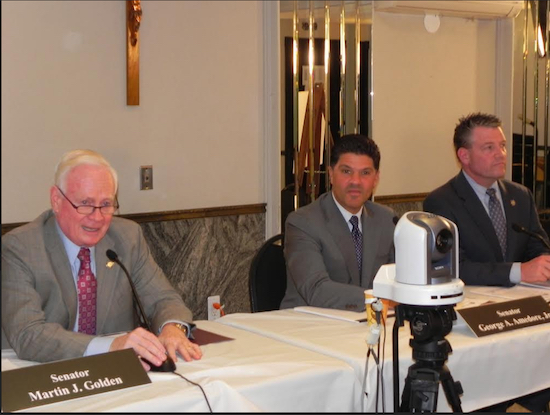State Senate passes 22 bills to curb opioid crisis

The bills came about after the task force held numerous hearings around the state, including Dyker Heights. Pictured are state senators Mary Golden, George Amedore Jr., and Terrence Murphy (left to right). Eagle file photo by Paula Katinas
Acting on a series of recommendations made by a special task force charged with investigating New York’s growing opioid crisis, the state Senate has approved a package of 22 bills aimed at combating the issue on several fronts.
Sen. Marty Golden (R-C-Bay Ridge-Southwest Brooklyn) said that additional legislation is expected to come up for a vote before the session ends next month.
Golden is a member of the Senate’s Joint Task Force on Heroin and Opioid Addiction, a panel that held hearings all over the state and listened to testimony from law enforcement officials, doctors, educators, rehabilitation experts and recovering addicts and then issued a report containing recommendations on how the state should begin to tackle the issue.
